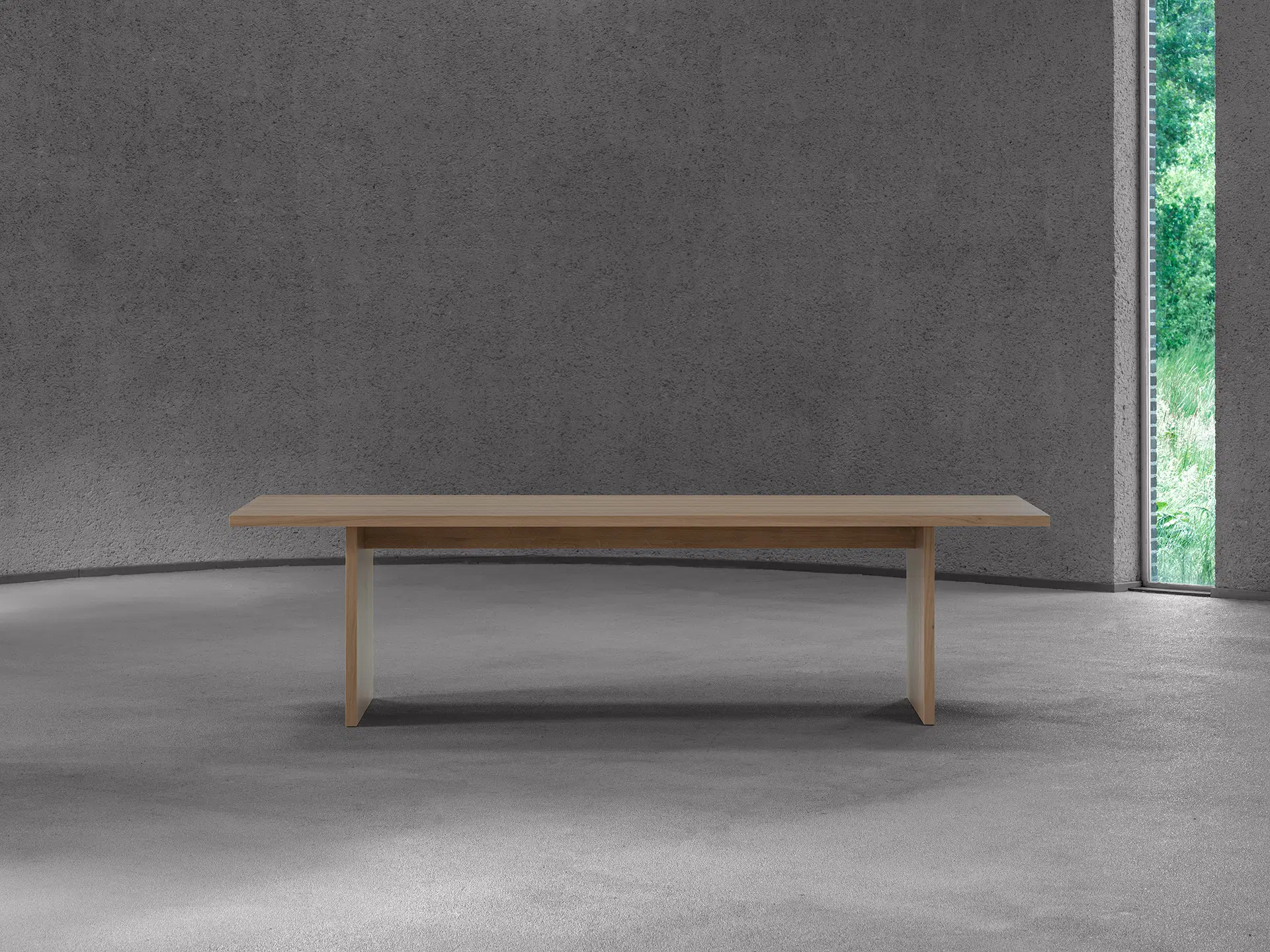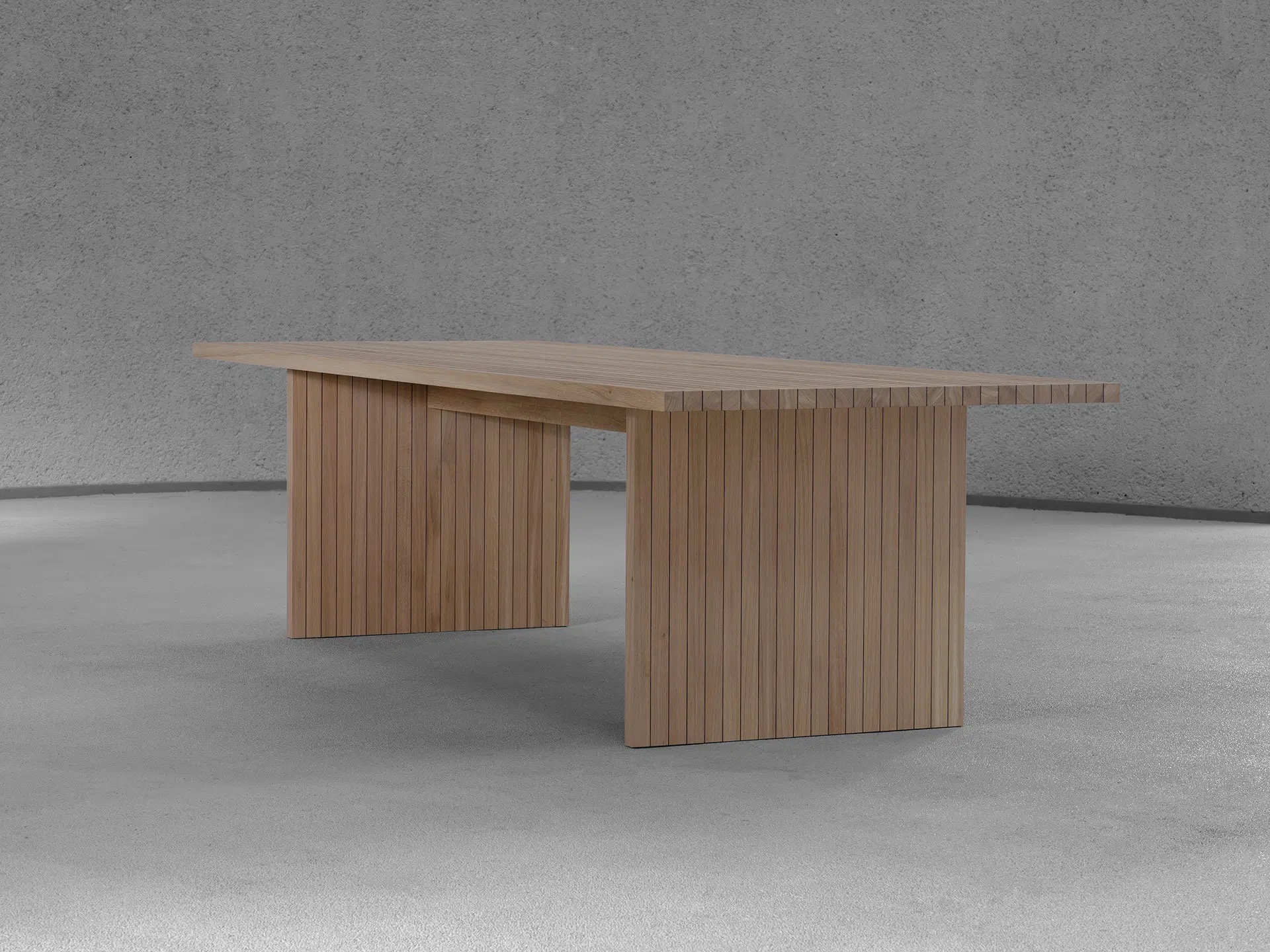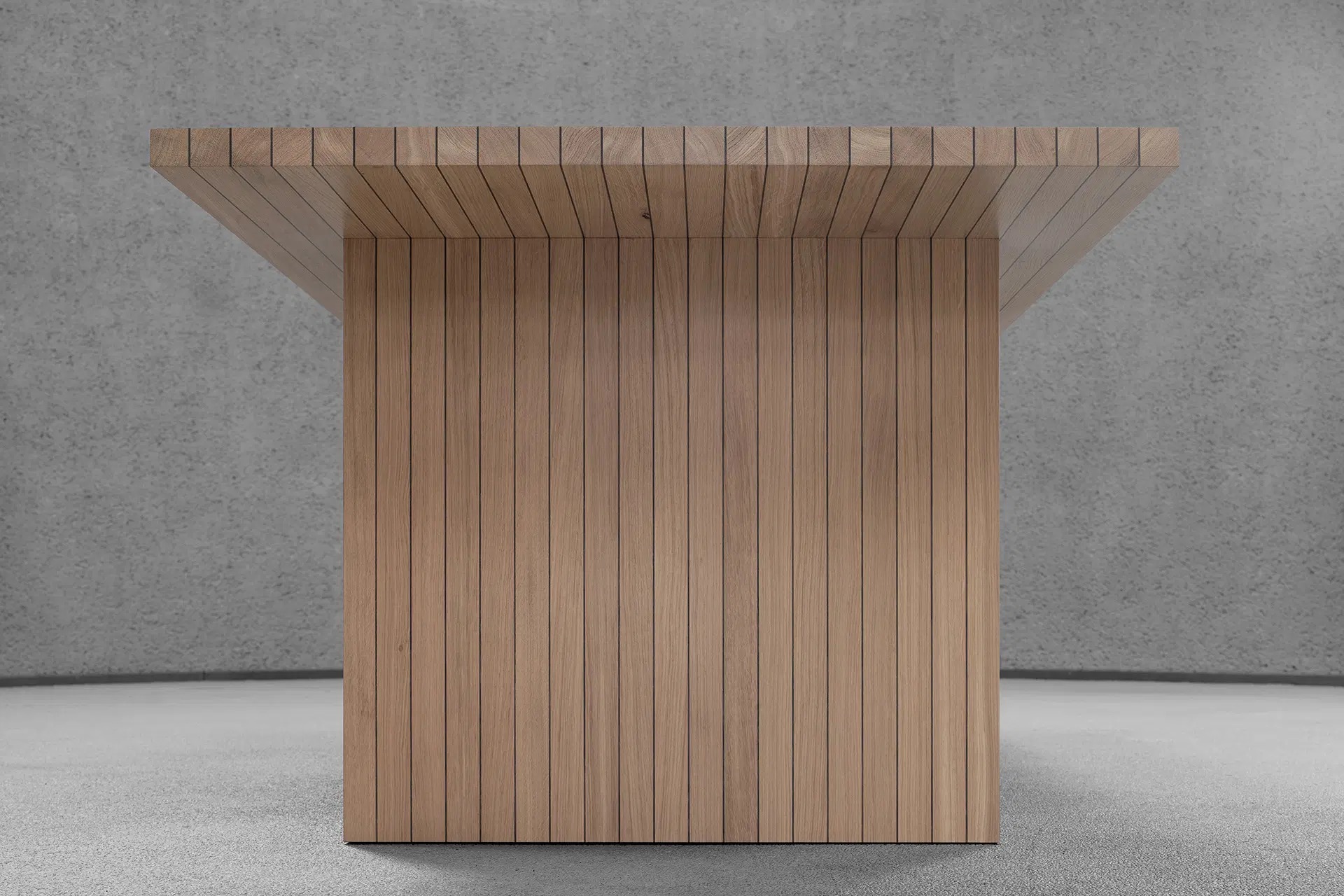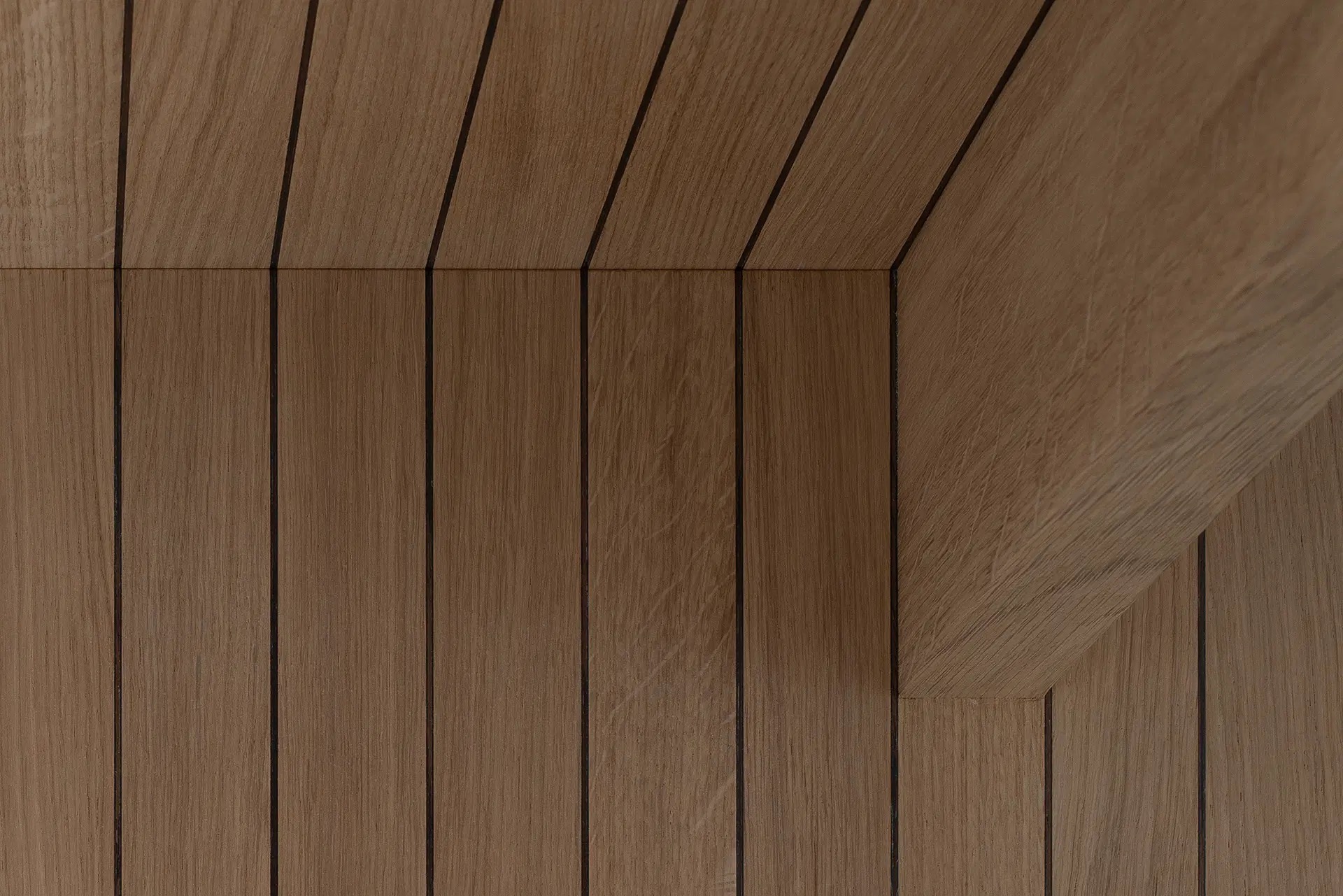Rhythm Table is a minimal table designed by Amsterdam-based architect Julius Taminiau in collaboration with Øde Design. The name “Øde” is derived from the place the tables are crafted – in a small factory established in 1754 – Udenhout, formerly known as Ødenhout. Ode means tribute, homage. Hout means wood. The designers wanted to use this as a starting point. When the architect thought about a tribute or homage, he thought about legacy and respect for our heritage. Respect for nature and deal with it sustainably and responsibly. The respect for crafting something made by an expert with love and inspiration. The respect for universal beauty is not bound by time, timeless. Next, he wanted to make a personal tribute to music and nature. Music and nature are enormous sources of inspiration, and he wanted to base the design on this and search for the essence to represent music and nature in a table.
The rhythmic play of the table reflects the rhythm of music and nature. In nature, the designer thinks of the rhythm of day and night, the seasons and years, clearly visible in the growth rings of a tree or audible in the chirping of a bird. In music, he immediately think of Miles Davis’ Blue in Green or Vivaldi’s Quattro Stagioni (which is also a tribute to the four seasons). The juxtaposition of the wooden elements – oak and dark veneer – creates the rhythm for the table. The shape of the table has been kept as simple as possible to represent this rhythmic play as strongly as possible. The veneer is not used as decoration, something that hides (a lesser quality of wood), but rather something that reveals that the veneer is partly visible and provides a supportive subtle rhythmic effect.







